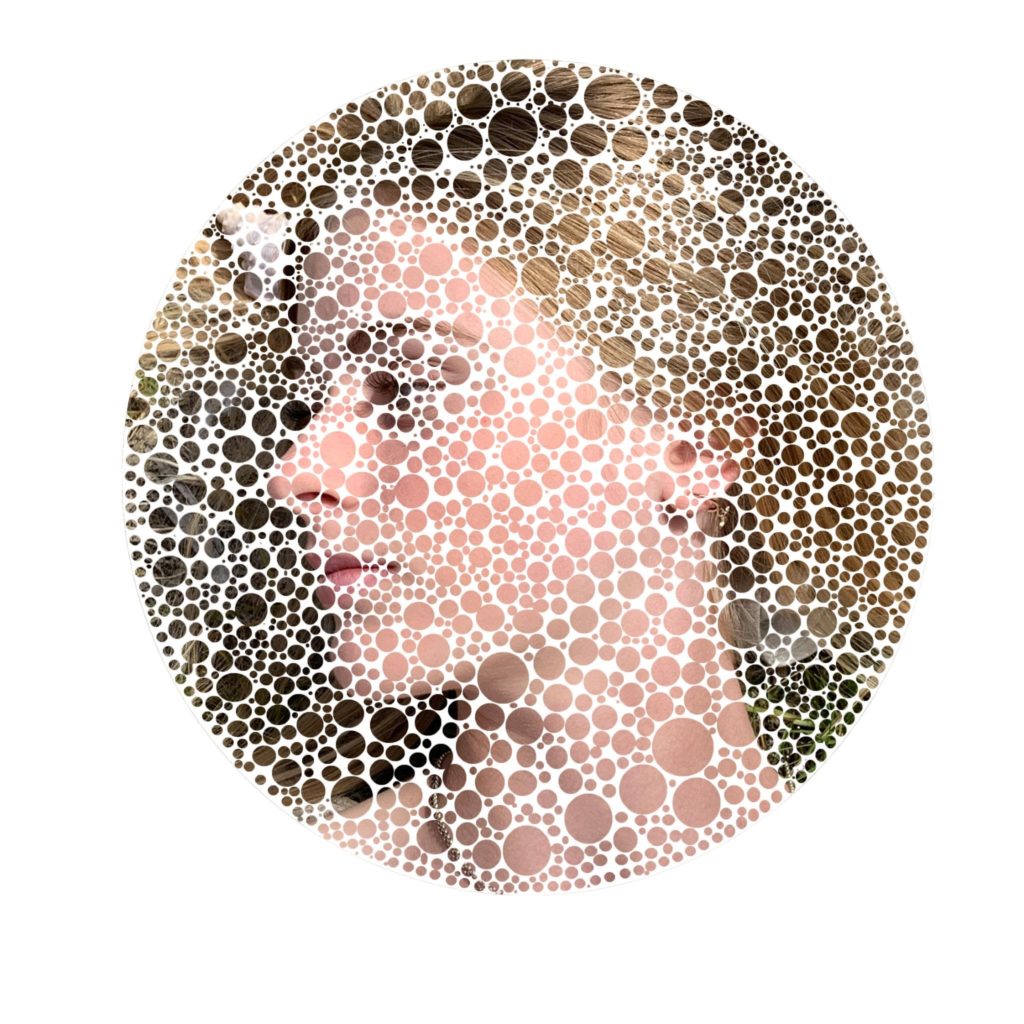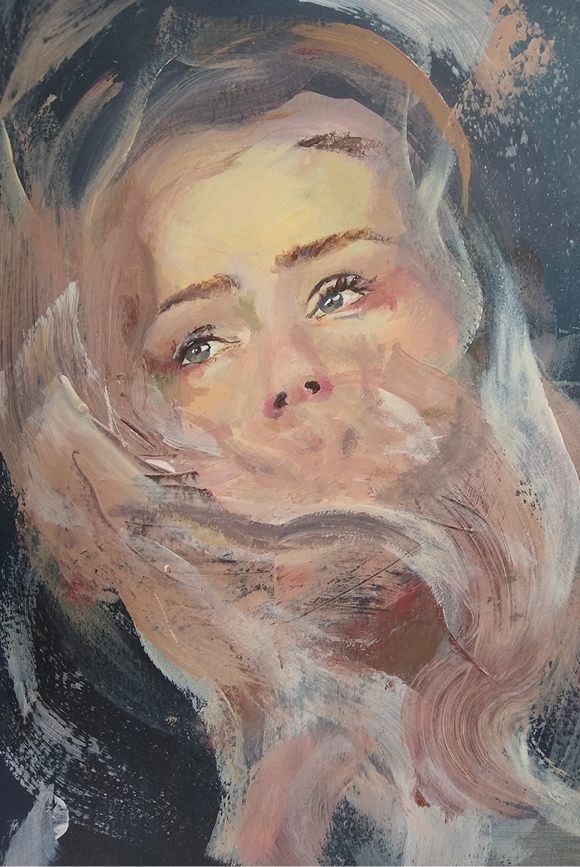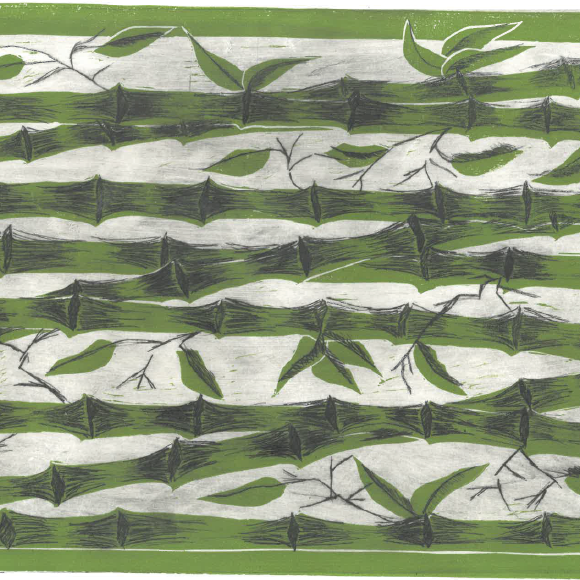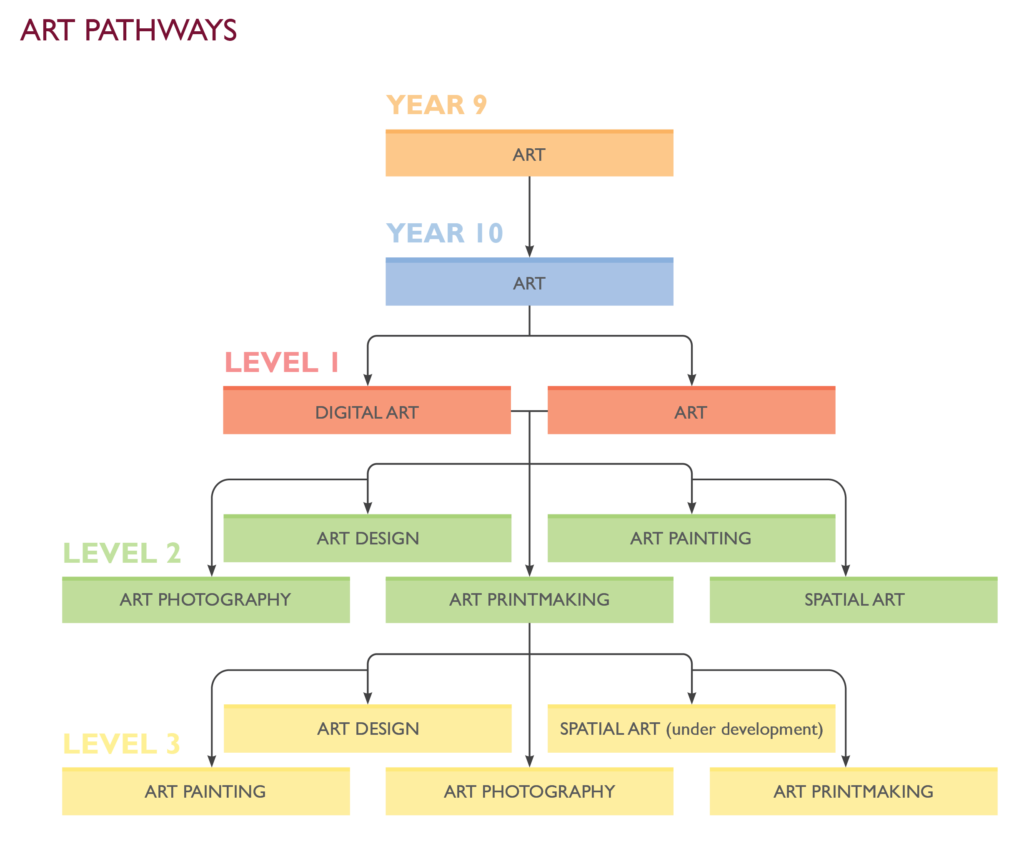Home > Departments > Art
Visual Arts education at HGHS is centered around developing visual literacy and thinking creatively. All students benefit from the visual art curriculum in that they develop and establish creative habits of mind. Our students also learn a wide variety of art-making processes from traditional through to digital. Some students go on to study Visual Art at the tertiary level to train further for a variety of creative industries. Our facilities offer computer labs, a book room, a senior design room, a photography lighting studio, senior painting studios, and several printing presses.
In visual arts education, students develop visual literacy and aesthetic awareness as they manipulate and transform visual, tactile, and spatial ideas to solve problems. They explore experiences, stories, abstract concepts, social issues, and needs, both individually and collaboratively. They experiment with materials, using processes and conventions to develop their visual enquiries and create both static and time-based art works. They view art works, bringing their own experiences, sharing their responses, and generating multiple interpretations. Their meaning making is further informed by investigation of the contexts in which artworks are created, used, and valued. As they develop their visual literacy, students are able to engage with a wider range of art experiences in increasingly complex and conscious ways.
Our facilities at HGHS include computer labs, a book room, a senior design room, a photography lighting studio, senior painting studios, and several printing presses.

An open entry course for students who would like to cultivate their creativity and confidence in practical art. Throughout the course, a range of media and techniques will be used to develop an overall theme which will culminate in the making of a Folio of work at the end of the year. Media used may include but is not limited to, acrylic paint, watercolour, drypoint printing, collage and cutouts as well as pencil charcoal and India ink. Critical thinking and literacy are developed in visual art by researching established practice.and students are encouraged to communicate their ideas in written formats as well as in visual responses. This course will prepare students for any Visual Arts course at the senior level.



An open entry course for students who would like to cultivate their creativity and confidence in digital art. This course combines both photography and design techniques to develop a connected series of thematic images which will culminate in the making of a Folio of work at the end of the year. Students will learn how to take great photographs understanding composition, lighting, colour and contrast. The photographic images produced will be the starting point for design based images involving the art of typography, graphic design and illustration using Adobe Creative Cloud. Critical thinking and literacy are developed in digital art by researching traditional and contemporary photographers and designers. Students are encouraged to communicate their ideas in written formats as well as in visual responses. This course will prepare students for both the Visual Art Photography and Design courses at senior level.



This course is for anyone interested in being a creative visual communicator. Students are encouraged to become independent problem-solvers while researching traditional and contemporary graphic designers. The course offers a wide range of technical skills from exploring typography, digital/hand-drawn illustration, image manipulation, and layout. The creative process is an essential component of this course through ideas development and image regeneration and becoming confident in using digital formats such as Adobe Creative Cloud.
This course is suitable for students interested in expanding their creative visual communication skills. The course will build on students’ knowledge of graphic design conventions such as posters, packaging or magazine layout, logo, or character development while they discover their creative style. An authentic learning environment is where the students choose and develop their theme and ideas while using established practice relevant to their desired outcome. An independent exploration into the creative design processes and ongoing problem-solving is a crucial component of this course, along with the use of digital formats such as Adobe Creative Cloud.






Authentic learning is encouraged through the independent study of established practice and thematic content in the form of a proposition. Propositions will be developed in both internal standards as well as the external folio submitted at the end of the year. The creative process of analysis, generating ideas, developing artworks, refining and extending ideas is central to this course. Students will gain confidence in their creativity and critical thinking with this process, as well as advance their techniques and skill in various wet media. Additionally, the research internal assessment involves studying artists that have a similar theme and builds on digital skills and literacy. Level 2 Painting is preferential in preparing students for Level 3 Painting.
Students are initially asked to develop a proposition for the entire course of study and are expected to research established practice in depth, to refine their project over time. Research also takes the form of an internal standard that is run in parallel with the practical internal standard. The practical standard encourages the use of drawing to generate ideas and clarify directions as well as experimentation in media that includes but is not limited to; gel mediums, pouring mediums, watercolour, gouache, acrylic paint, oil paint and collage media. The external folio submitted at the end of the year is an edited presentation of the student’s ability to systematically demonstrate conventions and ideas in painting practice.






Students are taught how to use a single lens reflex digital camera in order to have total control of the photographic image making process. A range of techniques are explored including compositional conventions, depth of field, shutter speed, colour, lighting and photo editing. Individualised programmes of study are encouraged with students deciding on their own thematic pathway supported by studying the work of tradition and contemporary photographers. The creative process of analysis, generating ideas, developing artworks, refining and extending ideas is central to this course. Students will gain confidence in their creativity and critical thinking as well as advancing their techniques and skills using the Adobe creative cloud. Level 2 Photography is preferential in preparing students for Level 3 Photography and Design.
Previous knowledge of camera techniques is built upon and an individual program of study is followed with students choosing their own theme for the year. It is expected that in-depth research of traditional and contemporary visual artists including photographers is carried out in order to enable students to refine their work over time. This practical course encourages the art of image making with the camera to generate ideas and clarify directions as well as experimentation and manipulation of photographic images using the Adobe creative suite. The external Folio submitted at the end of the year is an edited presentation of the student’s ability to systematically demonstrate conventions and ideas in photography practice.






Printmaking is a course that requires students to use research and drawing to systematically generate artwork and ideas related to a chosen theme. Throughout this course students will learn a variety of techniques and printmaking processes as well as investigate a range of artists in depth. In addition students will develop their skills in industry based programs such as Adobe Creative Cloud. Students will gain confidence in their creativity and critical thinking by exploring the media of print which can include lino, wood cuts, mono printing, collagraph and drypoint etchings.
Printmaking is a course that requires students to use research and drawing to systematically generate artwork and ideas related to a chosen proposition. Key outcomes are critical thinking, confidence and creative planning as well as the capacity to explore visual ideas through print media, which can include lino, wood, mono printing, collagraph and drypoint etchings. In addition students will develop their skills in industry based programs such as Adobe Creative Cloud



All HGHS courses at Level 3 are University approved and allow students to gain academic endorsements as well as enter Scholarship. Some students go on to study Visual Art at the tertiary level to train further for a variety of creative industries.
The Visual Arts at HGHS can inspire a diverse range of careers or lifelong passions such as graphic, spatial and concept design, photography, animation, theatre set, web and interior design, jewelry metalsmithing, glass and ceramic art, floristry, fashion, photography, publishing, 3D art, arts education, product design, illustration, architecture, marketing, advertising, creative design, writing and curation, art restoration, as well as fine artist and film making.



All HGHS courses at Level 3 are University approved and allow students to gain academic endorsements as well as enter Scholarship. Some students go on to study Visual Art at the tertiary level to train further for a variety of creative industries.
The Visual Arts at HGHS can inspire a diverse range of careers or lifelong passions such as graphic, spatial and concept design, photography, animation, theatre set, web and interior design, jewelry metalsmithing, glass and ceramic art, floristry, fashion, photography, publishing, 3D art, arts education, product design, illustration, architecture, marketing, advertising, creative design, writing and curation, art restoration, as well as fine artist and film making.






An open entry course for students who would like to cultivate their creativity and confidence in practical art. Throughout the course, a range of media and techniques will be used to develop an overall theme which will culminate in the making of a Folio of work at the end of the year. Media used may include but is not limited to, acrylic paint, watercolour, drypoint printing, collage and cutouts as well as pencil charcoal and India ink. Critical thinking and literacy are developed in visual art by researching established practice.and students are encouraged to communicate their ideas in written formats as well as in visual responses. This course will prepare students for any Visual Arts course at the senior level.



An open entry course for students who would like to cultivate their creativity and confidence in digital art. This course combines both photography and design techniques to develop a connected series of thematic images which will culminate in the making of a Folio of work at the end of the year. Students will learn how to take great photographs understanding composition, lighting, colour and contrast. The photographic images produced will be the starting point for design based images involving the art of typography, graphic design and illustration using Adobe Creative Cloud. Critical thinking and literacy are developed in digital art by researching traditional and contemporary photographers and designers. Students are encouraged to communicate their ideas in written formats as well as in visual responses. This course will prepare students for both the Visual Art Photography and Design courses at senior level.



This course is for anyone interested in being a creative visual communicator. Students are encouraged to become independent problem-solvers while researching traditional and contemporary graphic designers. The course offers a wide range of technical skills from exploring typography, digital/hand-drawn illustration, image manipulation, and layout. The creative process is an essential component of this course through ideas development and image regeneration and becoming confident in using digital formats such as Adobe Creative Cloud.
This course is suitable for students interested in expanding their creative visual communication skills. The course will build on students’ knowledge of graphic design conventions such as posters, packaging or magazine layout, logo, or character development while they discover their creative style. An authentic learning environment is where the students choose and develop their theme and ideas while using established practice relevant to their desired outcome. An independent exploration into the creative design processes and ongoing problem-solving is a crucial component of this course, along with the use of digital formats such as Adobe Creative Cloud.






Authentic learning is encouraged through the independent study of established practice and thematic content in the form of a proposition. Propositions will be developed in both internal standards as well as the external folio submitted at the end of the year. The creative process of analysis, generating ideas, developing artworks, refining and extending ideas is central to this course. Students will gain confidence in their creativity and critical thinking with this process, as well as advance their techniques and skill in various wet media. Additionally, the research internal assessment involves studying artists that have a similar theme and builds on digital skills and literacy. Level 2 Painting is preferential in preparing students for Level 3 Painting.
Students are initially asked to develop a proposition for the entire course of study and are expected to research established practice in depth, to refine their project over time. Research also takes the form of an internal standard that is run in parallel with the practical internal standard. The practical standard encourages the use of drawing to generate ideas and clarify directions as well as experimentation in media that includes but is not limited to; gel mediums, pouring mediums, watercolour, gouache, acrylic paint, oil paint and collage media. The external folio submitted at the end of the year is an edited presentation of the student’s ability to systematically demonstrate conventions and ideas in painting practice.






Students are taught how to use a single lens reflex digital camera in order to have total control of the photographic image making process. A range of techniques are explored including compositional conventions, depth of field, shutter speed, colour, lighting and photo editing. Individualised programmes of study are encouraged with students deciding on their own thematic pathway supported by studying the work of tradition and contemporary photographers. The creative process of analysis, generating ideas, developing artworks, refining and extending ideas is central to this course. Students will gain confidence in their creativity and critical thinking as well as advancing their techniques and skills using the Adobe creative cloud. Level 2 Photography is preferential in preparing students for Level 3 Photography and Design.
Previous knowledge of camera techniques is built upon and an individual program of study is followed with students choosing their own theme for the year. It is expected that in-depth research of traditional and contemporary visual artists including photographers is carried out in order to enable students to refine their work over time. This practical course encourages the art of image making with the camera to generate ideas and clarify directions as well as experimentation and manipulation of photographic images using the Adobe creative suite. The external Folio submitted at the end of the year is an edited presentation of the student’s ability to systematically demonstrate conventions and ideas in photography practice.






Printmaking is a course that requires students to use research and drawing to systematically generate artwork and ideas related to a chosen theme. Throughout this course students will learn a variety of techniques and printmaking processes as well as investigate a range of artists in depth. In addition students will develop their skills in industry based programs such as Adobe Creative Cloud. Students will gain confidence in their creativity and critical thinking by exploring the media of print which can include lino, wood cuts, mono printing, collagraph and drypoint etchings.
Printmaking is a course that requires students to use research and drawing to systematically generate artwork and ideas related to a chosen proposition. Key outcomes are critical thinking, confidence and creative planning as well as the capacity to explore visual ideas through print media, which can include lino, wood, mono printing, collagraph and drypoint etchings. In addition students will develop their skills in industry based programs such as Adobe Creative Cloud


